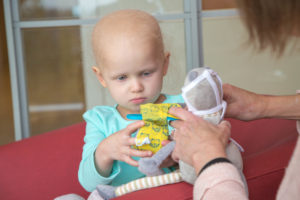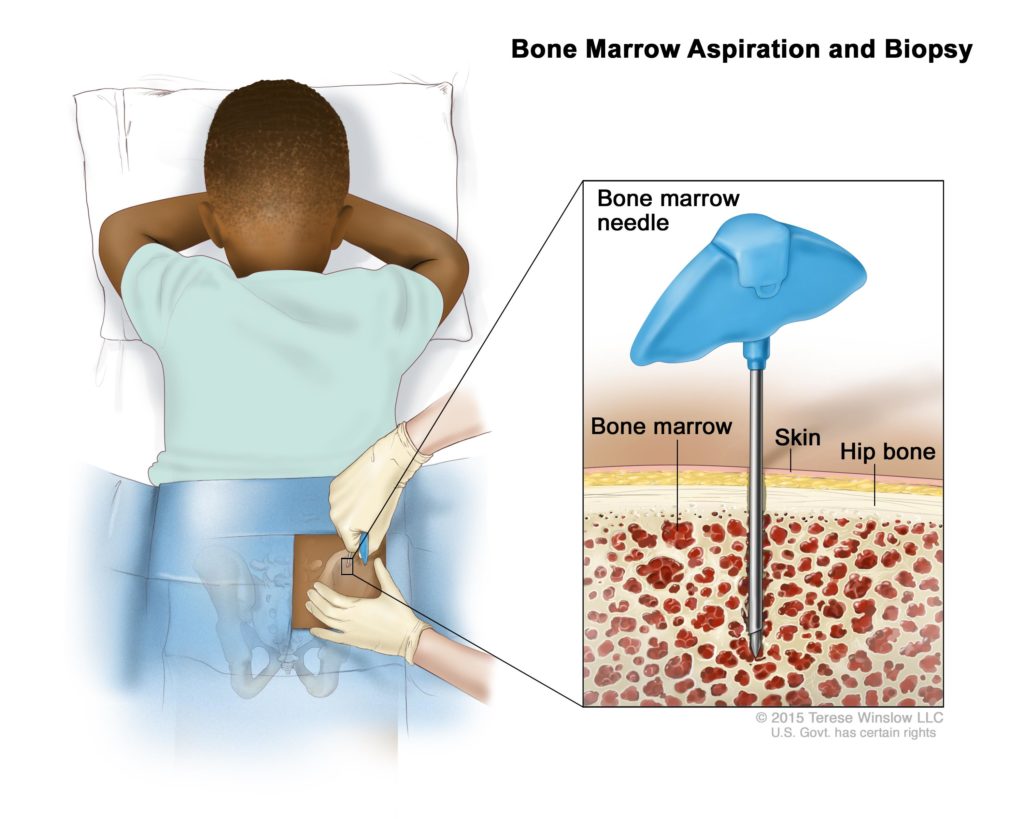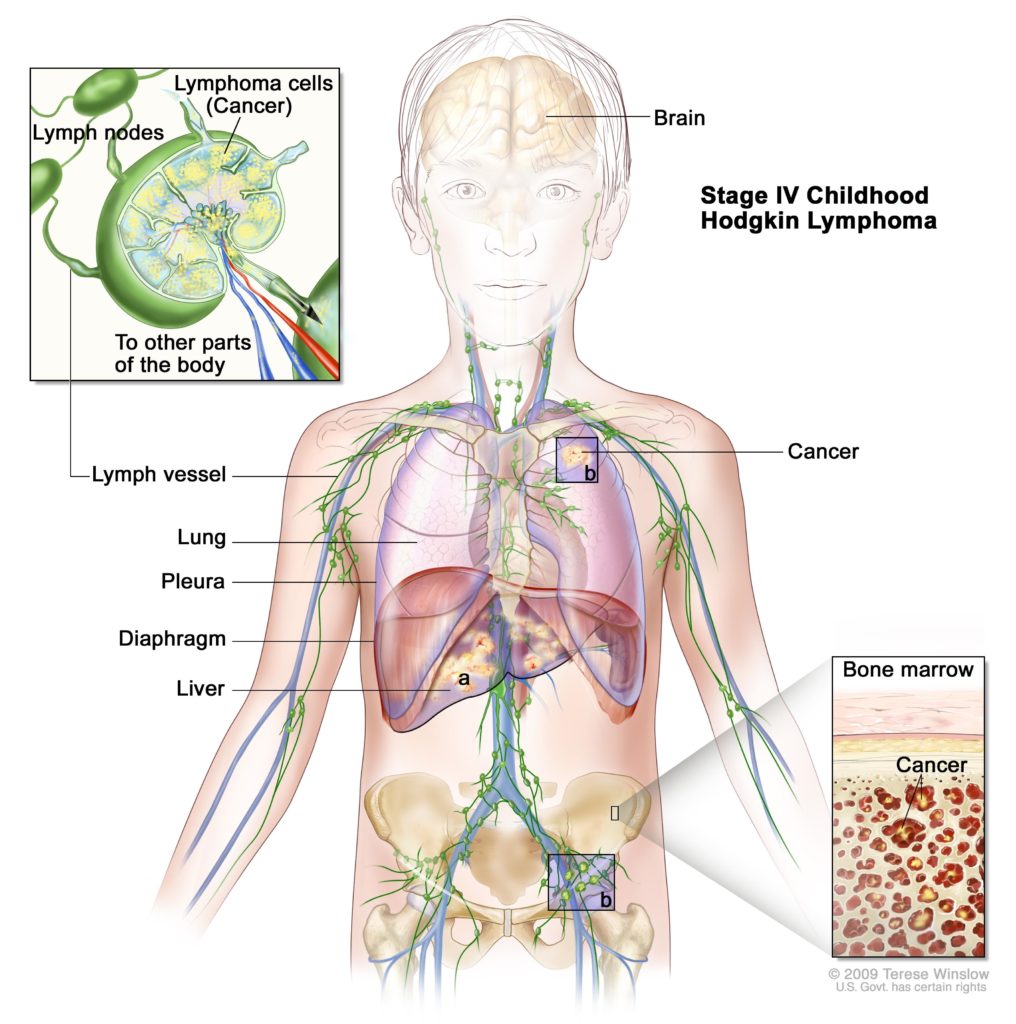Treating Childhood Hodgkin Lymphoma
 Childhood Hodgkin lymphoma has proven to be particularly sensitive to both chemotherapy and radiation therapy. Therefore, for most children diagnosed with this type of childhood cancer, treatment will likely involve some combination of both modalities. Surgery is rarely ever used to remove Hodgkin lymphoma tumors, although surgical procedures may be required to facilitate chemotherapy and radiation therapy protocols. The exception to this general rule may be found in the treatment of some cases of localized lymphocyte-predominant Hodgkin lymphoma, where surgery may prove a more effective course of treatment than chemotherapy and/or radiation.
Childhood Hodgkin lymphoma has proven to be particularly sensitive to both chemotherapy and radiation therapy. Therefore, for most children diagnosed with this type of childhood cancer, treatment will likely involve some combination of both modalities. Surgery is rarely ever used to remove Hodgkin lymphoma tumors, although surgical procedures may be required to facilitate chemotherapy and radiation therapy protocols. The exception to this general rule may be found in the treatment of some cases of localized lymphocyte-predominant Hodgkin lymphoma, where surgery may prove a more effective course of treatment than chemotherapy and/or radiation.
Both chemotherapy and radiation therapy can have severe and long-lasting health effects (so-called “late effects”). Therefore, the goal of your child’s treatment plan will be to attempt to create a delicate balance between enough treatment to eliminate the cancer and prevent the growth of new cancer cells and minimizing both short- and long-term damage to your child’s growing body. Moreover, the oncology team will also consider your child’s age and medical history, as well as the “stage” of the disease (how far the disease has progressed and spread from the site of the original tumor), whether diagnosis occurred with so-called “B” symptoms (fever, night sweats, and/or unexplained weight loss), and an assessment of risk.
Thus, the description of treatment options below are generalized and for informational purposes only; your child’s treatment course, including intensity and duration, will likely be a unique combination of these or other options depending on the unique factors in your child’s case.
Chemotherapy for Childhood Hodgkin Lymphoma
Chemotherapy involves targeting cancer cells with toxic drugs designed to kill the cells as they replicate and divide. Because cancer cells grow, replicate, and divide more quickly than normal, non-diseased cells, they are more susceptible to the harmful effects of the drugs than are healthy cells. Still, healthy cells are affected by chemotherapy as well, leading to both short- and long-term health effects. Moreover, different types of chemotherapy agents can have different types of short- and long-term health effects. Therefore, your child’s chemotherapy protocol will likely involve a combination of different drugs given in as low dosages as possible.
Most chemotherapy protocols for childhood Hodgkin lymphoma will involve some unique mixture of three standardized drug combinations:
- ABVD (the most common treatment protocol for adult Hodgkin lymphoma):
- Adriamycin® (doxorubicin)
- Bleomycin
- Vinblastine
- Dacarbazine (DTIC)
- BEACOPP
- Bleomycin
- Etoposide (VP-16)
- Adriamycin (doxorubicin)
- Cyclophosphamide (Cytoxan®)
- Oncovin® (vincristine)
- Procarbazine
- Prednisone
- Stanford V
- Doxorubicin (Adriamycin)
- Mechlorethamine (nitrogen mustard)
- Vincristine
- Vinblastine
- Bleomycin
- Etoposide
- Prednisone
Radiation Therapy
Radiation therapy works by targeting cancer cells with high-energy beams, usually composed of x-rays or protons. The beams of energy damage the DNA inside the cancer cells and prevent it from replicating itself. In most cases of childhood Hodgkin lymphoma, the preferred method of treatment is a combination approach incorporating both radiation therapy and chemotherapy. By combining both treatment modalities, the goal is to effectively reduce the size of the tumor and prevent the growth of new cancer cells while minimizing the risk of both short- and long-term side effects.
As with chemotherapy, radiation damages healthy cells as well as cancerous cells. For young adults who are past puberty and have stopped growing, radiation therapy may play a more substantial role in treatment for childhood Hodgkin lymphoma than chemotherapy. However, because the bodies of younger children are still growing and developing, the risk of long-term damage from radiation therapy is greater. Therefore, chemotherapy is the preferred method of treatment, with radiation generally used as a supplemental treatment designed to prevent the cancer from recurring.
About American Childhood Cancer Organization
American Childhood Cancer Organization (ACCO) is a non-profit charity dedicated to helping kids with cancer and their families navigate the difficult journey from cancer diagnosis through survivorship. Internationally, ACCO is the sole U.S. member of Childhood Cancer International (CCI), the largest patient-support organization for childhood cancer in the world. Here in the United States, ACCO promotes the critical importance of ensuring continued funding into new and better treatment protocols for childhood cancer. And most importantly, ACCO is focused on the children: developing and providing educational tools for children fighting cancer and their families, empowering them in their understanding of childhood cancer and the medical decisions they must make during this difficult journey. All of ACCO’s resources are available free of charge for families coping with childhood cancer.
For additional information about childhood cancer or on the ACCO, or to order resources for you or your child, please visit our website at www.acco.org , call 855.858.2226 or visit:





 Childhood Hodgkin lymphoma, similarly to adult Hodgkin lymphoma, is a type of malignant cancer of the lymph system, which forms a critical part of the immune system our bodies use to fight disease. Specifically, Hodgkin lymphoma usually begins in lymphocytes, a type of white blood cell responsible for fighting bacteria, viruses, and other foreign invaders. Hodgkin lymphoma makes up about 6% of all childhood cancers. Today, the prognosis for children with Hodgkin lymphoma is significantly higher than even a decade ago, with the five-year survival rate between 90-95%.
Childhood Hodgkin lymphoma, similarly to adult Hodgkin lymphoma, is a type of malignant cancer of the lymph system, which forms a critical part of the immune system our bodies use to fight disease. Specifically, Hodgkin lymphoma usually begins in lymphocytes, a type of white blood cell responsible for fighting bacteria, viruses, and other foreign invaders. Hodgkin lymphoma makes up about 6% of all childhood cancers. Today, the prognosis for children with Hodgkin lymphoma is significantly higher than even a decade ago, with the five-year survival rate between 90-95%.